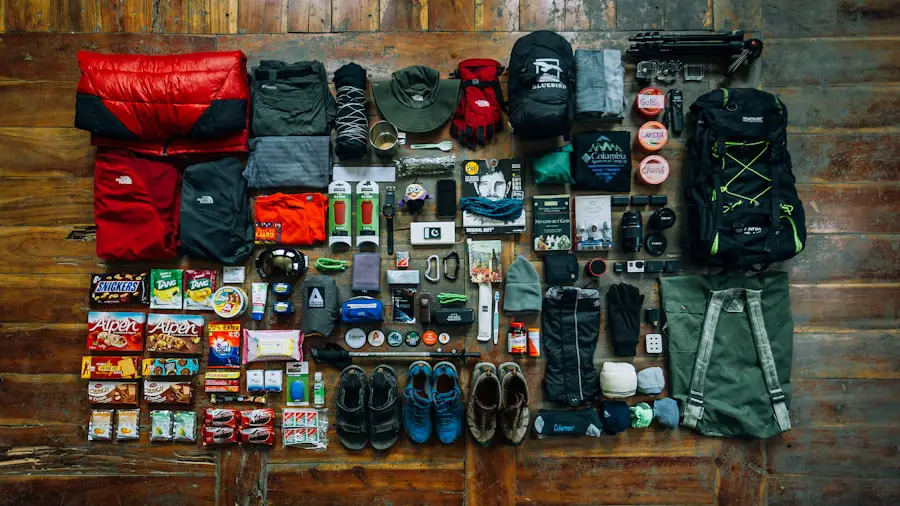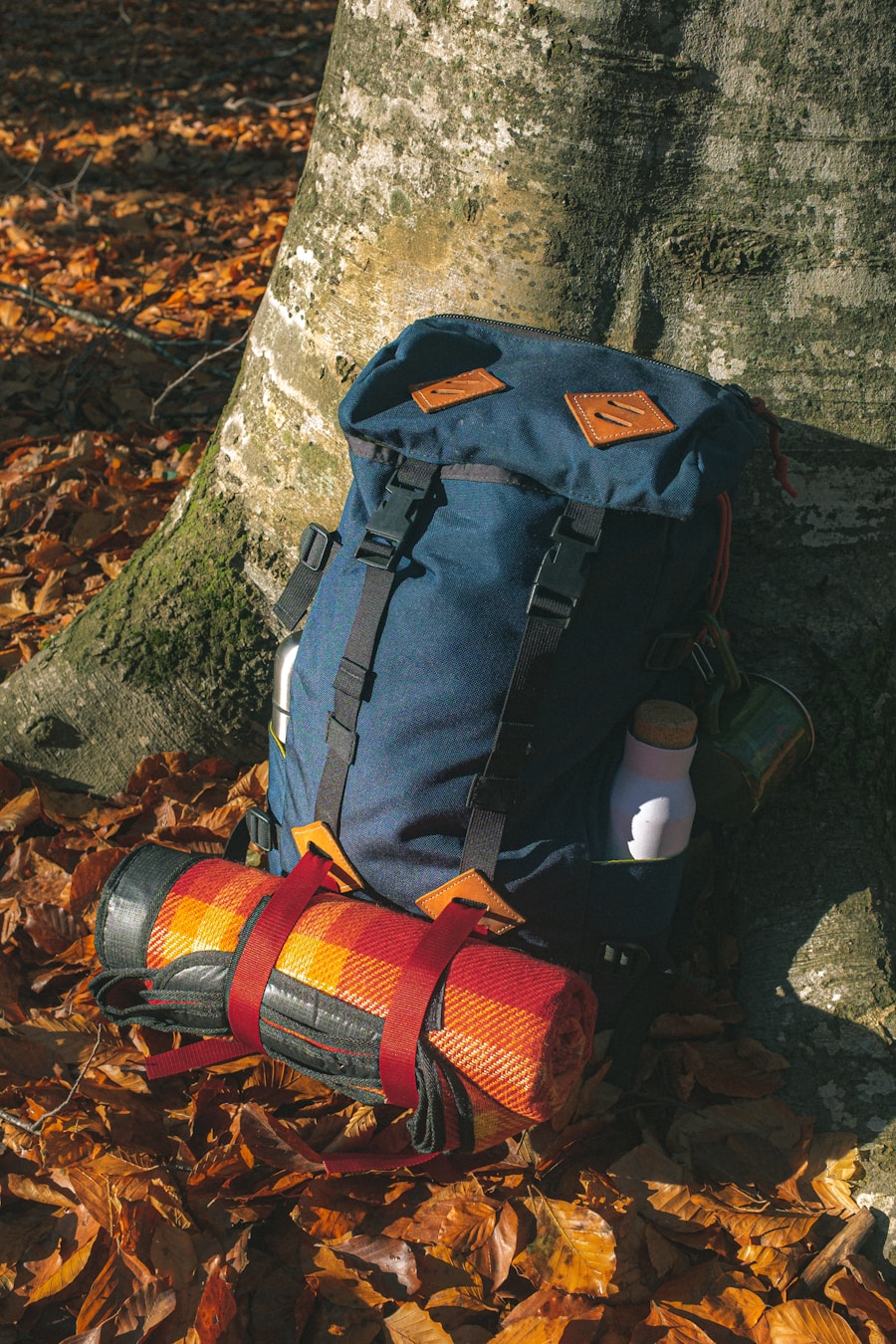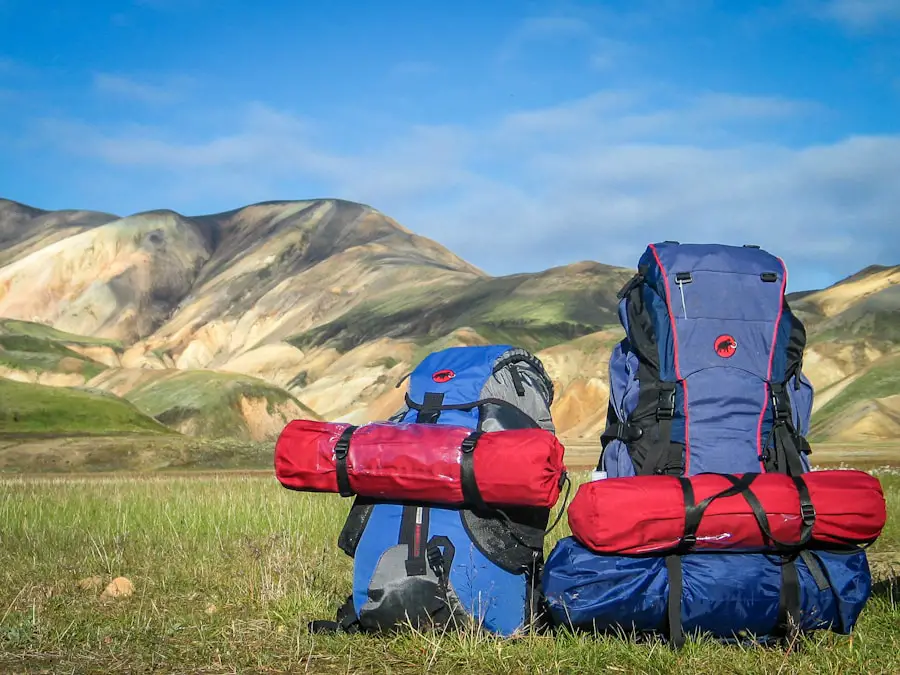Before embarking on the journey of selecting a hiking pack, it is essential to first understand your specific hiking needs. The type of hiking you plan to do—whether it’s a day hike, a weekend backpacking trip, or an extended expedition—will significantly influence the kind of pack you should consider. For instance, if you are primarily engaging in short day hikes, a smaller, lightweight daypack may suffice.
Conversely, if you are planning multi-day treks that require carrying camping gear, food, and water, a larger backpack with ample storage and organizational features will be necessary. Additionally, consider the environment in which you will be hiking. Different terrains and climates can dictate the type of gear you need.
For example, if you are hiking in a wet or humid area, you may require a pack with waterproof features or a rain cover. On the other hand, if your hikes are in arid regions, ventilation and breathability might be more critical to ensure comfort. Understanding these nuances will help you select a pack that not only meets your capacity needs but also aligns with the specific challenges posed by your hiking environment.
Key Takeaways
- Consider the duration and type of hiking you will be doing to understand your specific needs
- Choose between daypacks, overnight packs, and expedition packs based on the length of your hikes
- Consider the capacity and size of the pack based on the duration of your hikes and the gear you will need to carry
- Ensure the pack fits comfortably and distributes weight evenly to prevent strain and discomfort
- Look for features such as hydration systems, adjustable straps, and external pockets, and prioritize durable materials within your budget
Types of Hiking Packs
Hiking packs come in various shapes and sizes, each designed for specific activities and durations. Daypacks are typically smaller, ranging from 15 to 30 liters in capacity, making them ideal for short excursions where minimal gear is required. These packs often feature hydration reservoirs or pockets for water bottles, as staying hydrated is crucial during any hike.
They may also include compartments for snacks, first-aid kits, and other essentials, allowing for easy access while on the move. For those planning longer trips, overnight or multi-day packs are essential. These packs generally range from 40 to 80 liters and are designed to carry heavier loads over extended periods.
They often come equipped with features such as multiple compartments for organization, external attachment points for sleeping bags or tents, and advanced suspension systems to distribute weight evenly across the body. Additionally, specialized packs exist for specific activities like climbing or skiing, which may include gear loops or reinforced areas for carrying technical equipment.
Capacity and Size Considerations

When selecting a hiking pack, capacity and size are critical factors that directly impact your comfort and efficiency on the trail. The capacity of a pack is typically measured in liters and indicates how much gear it can hold. For day hikes, a pack with a capacity of 20 to 30 liters is usually sufficient to carry water, snacks, and a light jacket.
However, if you plan to hike for several days, you will need a larger pack that can accommodate sleeping gear, cooking supplies, and extra clothing. It’s also important to consider how the size of the pack correlates with your body type. A pack that is too large can lead to unnecessary weight and bulk, while one that is too small may not provide enough space for essential gear.
Many manufacturers offer packs in different sizes (small, medium, large) to cater to various torso lengths and body shapes. Trying on different sizes can help ensure that you find a pack that fits well and meets your capacity needs without compromising comfort.
Comfort and Fit
| Size | Comfort Rating | Fit Rating |
|---|---|---|
| Small | 4.5 | 4.3 |
| Medium | 4.7 | 4.5 |
| Large | 4.6 | 4.4 |
| Extra Large | 4.8 | 4.6 |
The comfort of a hiking pack is paramount, especially during long treks where discomfort can lead to fatigue and diminished enjoyment of the experience. A well-fitting pack should sit snugly against your back without causing pressure points or restricting movement. Look for packs with adjustable straps that allow you to customize the fit according to your body shape.
Many modern packs also feature padded shoulder straps and hip belts that help distribute weight evenly across your body. Additionally, consider the back panel design of the pack. Some packs come with ventilated mesh panels that promote airflow between your back and the pack, reducing sweat buildup during strenuous hikes.
Others may have contoured designs that follow the natural curve of your spine for enhanced comfort. It’s advisable to load the pack with weight similar to what you would carry on a hike when trying it on; this will give you a better sense of how it feels when fully loaded.
Features and Accessories
Hiking packs are equipped with various features and accessories that can enhance your hiking experience. One of the most important features is hydration compatibility; many packs come with built-in hydration reservoirs or sleeves for water bladders, allowing for easy access to water while on the move. Additionally, external pockets for water bottles can be convenient for quick hydration stops.
Other useful features include multiple compartments for organization, which can help keep your gear accessible and prevent it from shifting during your hike. Some packs also have attachment points for trekking poles or ice axes, making them suitable for more technical hikes. Furthermore, consider packs with built-in rain covers or weather-resistant materials if you anticipate encountering wet conditions.
These features can significantly improve your overall experience by ensuring that your gear remains dry and organized.
Material and Durability

The materials used in constructing a hiking pack play a crucial role in its durability and performance. Most hiking packs are made from synthetic fabrics such as nylon or polyester due to their lightweight properties and resistance to wear and tear. High-denier fabrics offer increased durability; for instance, a pack made from 1000D nylon will generally withstand more abrasion than one made from 500D nylon.
Water resistance is another important consideration when evaluating materials. Many packs feature water-repellent coatings or are constructed with waterproof materials to protect your gear from rain or splashes. However, it’s essential to note that while some packs may be labeled as water-resistant, they may not be entirely waterproof; therefore, using dry bags or packing cubes inside the main compartment can provide an extra layer of protection against moisture.
Budget Considerations
When it comes to purchasing a hiking pack, budget considerations are often at the forefront of decision-making. Hiking packs can range from budget-friendly options under $100 to high-end models exceeding $500. While it may be tempting to opt for the cheapest option available, investing in a quality pack can pay off in terms of comfort, durability, and functionality.
Consider what features are most important to you based on your hiking style and frequency. If you’re an occasional hiker who only ventures out a few times a year, a mid-range pack may suffice. However, if you plan on frequent long-distance hikes or multi-day trips, investing in a higher-quality pack with better materials and features could enhance your experience significantly.
Additionally, keep an eye out for sales or discounts at outdoor retailers; many brands offer seasonal sales that can make high-quality packs more affordable.
Tips for Trying and Testing Hiking Packs
Trying on hiking packs before making a purchase is crucial to ensure you find one that fits well and meets your needs. When visiting an outdoor retailer, take the time to load the pack with weight similar to what you would carry on a hike; this will give you a realistic sense of how it feels when fully loaded. Adjust all straps—shoulder straps, hip belts, and load lifters—to achieve a comfortable fit.
Walk around the store while wearing the pack to assess its comfort level over time; pay attention to any pressure points or areas of discomfort that may arise after several minutes of wear. If possible, simulate movements such as bending down or reaching overhead to see how the pack responds during dynamic activities. Additionally, consider testing packs at different stores or even renting them for short hikes before committing to a purchase; this hands-on experience can provide invaluable insights into what works best for you on the trail.
If you are planning a hiking trip and need guidance on choosing the right hiking pack, you may also be interested in reading an article on the best time to travel to Kenya. This article provides a complete guide on when to visit Kenya for optimal travel experiences. You can find more information on this topic
